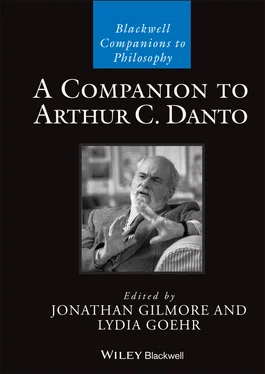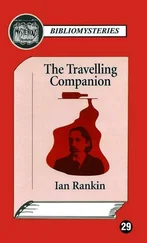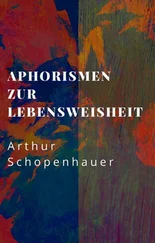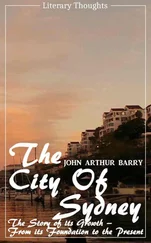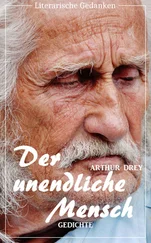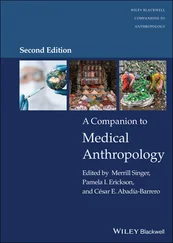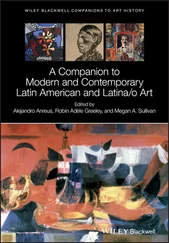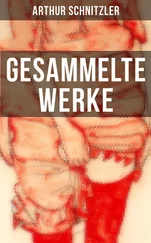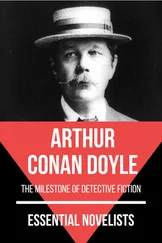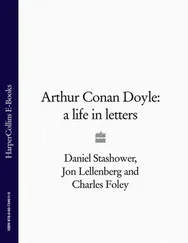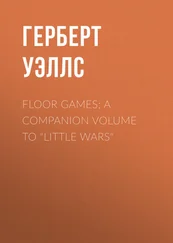A Companion to Arthur C. Danto
Здесь есть возможность читать онлайн «A Companion to Arthur C. Danto» — ознакомительный отрывок электронной книги совершенно бесплатно, а после прочтения отрывка купить полную версию. В некоторых случаях можно слушать аудио, скачать через торрент в формате fb2 и присутствует краткое содержание. Жанр: unrecognised, на английском языке. Описание произведения, (предисловие) а так же отзывы посетителей доступны на портале библиотеки ЛибКат.
- Название:A Companion to Arthur C. Danto
- Автор:
- Жанр:
- Год:неизвестен
- ISBN:нет данных
- Рейтинг книги:5 / 5. Голосов: 1
-
Избранное:Добавить в избранное
- Отзывы:
-
Ваша оценка:
- 100
- 1
- 2
- 3
- 4
- 5
A Companion to Arthur C. Danto: краткое содержание, описание и аннотация
Предлагаем к чтению аннотацию, описание, краткое содержание или предисловие (зависит от того, что написал сам автор книги «A Companion to Arthur C. Danto»). Если вы не нашли необходимую информацию о книге — напишите в комментариях, мы постараемся отыскать её.
Companion
A Companion to Arthur C. Danto
A Companion to Arthur C. Danto — читать онлайн ознакомительный отрывок
Ниже представлен текст книги, разбитый по страницам. Система сохранения места последней прочитанной страницы, позволяет с удобством читать онлайн бесплатно книгу «A Companion to Arthur C. Danto», без необходимости каждый раз заново искать на чём Вы остановились. Поставьте закладку, и сможете в любой момент перейти на страницу, на которой закончили чтение.
Интервал:
Закладка:
Notes
1 1 For the most detailed and recent discussion of my philosophical differences with Arthur Danto, see Shusterman 2013b (that includes an afterword by Danto) and my contributions (“Art in a Box” and “Art as Religion: Transfiguations of Danto’s Dao”) to the two different Blackwell editions of Danto and His Critics (Rollins 1993, 2012). For an extended audiovisual encounter at the Tate Museum in London, which also included the art historian Thierry de Duve, see http://www.tate.org.uk/context-comment/video/contested-territories-arthur-danto-thierry-de-duve-richard-shusterman.
References
1 Brent, John. 1993. Charles Sanders Peirce: A Life, 49. Bloomington, IN: Indiana University Press.
2 Danto, Arthur C. 1981. The Transfiguration of the Commonplace: A Philosophy of Art. Cambridge, MA: Harvard University Press.
3 –––––. 1986. The Philosophical Disenfranchisement of Art, 210. New York: Columbia University Press.
4 –––––. 1992. Beyond the Brillo Box: The Visual Arts in Post-Historical Perspective. New York: Farrar, Straus and Giroux.
5 –––––. 1997. After the End of Art: Contemporary Art and the Pale of History. Princeton, NJ: Princeton University Press.
6 –––––. 2000. The Madonna of the Future: Essays in a Pluralistic Artworld. New York: Farrar, Strauss, and Giroux.
7 –––––. 2003. The Abuse of Beauty and the Concept of Art. Chicago and LaSalle, IL: Open Court.
8 –––––. 2010. Andy Warhol, 29. New Haven, CT: Yale University Press.
9 –––––. 2012. “Replies to Essays.” In Danto and His Critics, edited by Mark Rollins, 2nd edn, 285–311. Oxford: Blackwell.
10 –––––. 2013. What Art Is. New Haven, CT: Yale University Press.
11 Peirce, Charles S. 1967. Manuscript Text in Harvard’s Houghton Library’s Collection of Peirce Papers, Catalogued by Richard Robin, Item 1334, 40. http://www.iupui.edu/~peirce/robin/robin_fm/toc_frm.htm
12 –––––. 1998. “The Three Normative Sciences.” In The Essential Peirce, Vol. 2, 196–207. Bloomington, IN: Indiana University Press.
13 Rollins, Mark. 1993. Danto and His Critics. Oxford: Blackwell.
14 –––––. 2012. Danto and His Critics, 2nd edn. Oxford: Blackwell.
15 Shusterman, Richard. 1992. Pragmatist Aesthetics: Living Beauty, Rethinking Art. Oxford, UK: Blackwell.
16 –––––. 1997. “The End of Aesthetic Experience.” Journal of Aesthetics and Art Criticism 55(1): 29–41. Reprinted in Performing Live: Aesthetic Alternatives for the End of Art. Ithaca, NY: Cornell University Press.
17 –––––. 2001. “Art as Dramatization.” Journal of Aesthetics and Art Criticism 59(4): 363–72. Reprinted in Surface and Depth (2002). Ithaca, NY: Cornell University Press.
18 –––––. 2011. “The Pragmatist Aesthetics of William James.” British Journal of Aesthetics 51(4): 347–61.
19 –––––. 2012. “Thought in the Strenuous Mood: Pragmatism as a Philosophy of Feeling.” New Literary History 43(3): 433–54.
20 –––––. 2013a. “Affective Cognition: From Pragmatism to Somaesthetics.” Intellectica 60: 49–68.
21 –––––. 2013b. Chemins de l’art: Transfigurations du pragmatism au zen, avec une postface par Arthur Danto. Translated by Raphael Cuir. Paris: Al Dante.
22 –––––. 2014. “The Invention of Pragmatist Aesthetics: Genealogical Reflections on a Notion and a Name.” In Practicing Pragmatist Aesthetics, edited by Wojciech Malecki, 13–32. Amsterdam: Rodopi.
7 Danto on Dewey (and Dewey on Danto)
CASEY HASKINS
“I couldn’t avoid Dewey’s influence,” Danto recalls in a 1990 interview about his early years at Columbia, where he received his PhD and began teaching in the early fifties. Dewey was a towering figure in the same department from 1905 to 1930. Danto goes on:
[H]e was a big deal at the time. He’s getting to be a big deal again. But from the very beginning I thought he was just awful, just muddy, like a preacher, portentous and uninteresting. I still think a lot of that is true, but I think analytic philosophy enables one to see Dewey as one of the main systems, a somewhat ‘holistic’ system. In Dewey as a writer, I don’t have much interest and in this I am in complete disagreement with Rorty. I don’t see any structure in him, while I have passion for the architecture of philosophical thought … I like connections to be clear, and I like to see structures, whereas with Dewey it’s an unstructured world in which you sort of move through a fog. … However … you can understand why he does it, what the systematic reasons are, and if you take a sufficiently distant view of that you can see that the lack of structure is one of the great historic alternatives to clarity. But it is not the way that I would want to do philosophy. I’m something of an eighteenth-century person, I really do see this as an ordered universe…. (Borradori 1994, 90–1).
Danto nowhere discusses Dewey or pragmatism at any great length, but he expresses similar sentiments throughout his writings. One senses that Danto regarded Dewey as a spectral presence that, in a field fueled by what William James famously called “clashes of temperament,” is better ignored than frontally engaged. This particular clash is interesting for the window it affords onto not only the careers of two singular thinkers but also onto the evolution of American Anglophone philosophy from the early postwar era to the present. Danto’s initial antipathy toward Dewey occurred amidst the shifting currents within the field in the fifties. It may also, as his remarks above suggest, have been rekindled by the Rorty-led neopragmatist revival of the 1970s and 1980s. In his 1989 Connections to the World: The Basic Concepts of Philosophy , Danto accordingly describes pragmatism as a philosophical system confusedly bent on bringing analytically healthy philosophy, rooted in a historically stable “cycle of positions,” to an end (Danto 1989, ch. 5).
Yet there are also intriguing hints in Connections ’ second (1997) edition of a further shift in Danto’s thinking about philosophy as a whole that brings him programmatically closer to Dewey than is evident in his earlier writings. More of this later. First, let us look further at the sources of Danto’s reaction to the classical pragmatist of whom he was the most critical but whose philosophy, at the same time, continues to offer a powerful lens for a critical reassessment of Danto’s own views.
Danto’s early reaction to Dewey at first seems puzzling. Portentousness and preacherliness aside, how could anyone find Dewey – who continues to attract new generations of readers in multiple disciplines, from phenomenological philosophy of mind and cognitive neuroscience to ethics, aesthetics, education theory, and ecophilosophy 1– uninteresting ? It helps here to recall the shifting matrix of intellectual coalitions, conflicts, and ideological change that was American academic philosophy in the early fifties.
This was a time when no single movement – pragmatism, logical positivism, ordinary language philosophy, or the kind of pluralistic history-focused study that gave equal time to Anglophone and Continental philosophy – quite yet dominated the curricula of leading departments, including Columbia’s. But the balance between what were earlier dubbed “speculative” and “critical” approaches – with pragmatism cast as speculative and analytical methods as critical – was clearly shifting in the latter direction. The earlier dominant influence of Dewey’s “experimental philosophy” over the Columbia department was waning. This was also a time of other dramatic ideological upheavals in the United States that bore directly and indirectly on the viability of certain research programs in philosophy and other humanistic disciplines. Increasingly, the embrace of analytic methods for many philosophers (if not the methods themselves) itself came increasingly to resemble an ideology – an ideology distinctly hostile toward such “uncritical” enterprises as Continental philosophy, Marxist theory, and pragmatism. 2
Читать дальшеИнтервал:
Закладка:
Похожие книги на «A Companion to Arthur C. Danto»
Представляем Вашему вниманию похожие книги на «A Companion to Arthur C. Danto» списком для выбора. Мы отобрали схожую по названию и смыслу литературу в надежде предоставить читателям больше вариантов отыскать новые, интересные, ещё непрочитанные произведения.
Обсуждение, отзывы о книге «A Companion to Arthur C. Danto» и просто собственные мнения читателей. Оставьте ваши комментарии, напишите, что Вы думаете о произведении, его смысле или главных героях. Укажите что конкретно понравилось, а что нет, и почему Вы так считаете.
